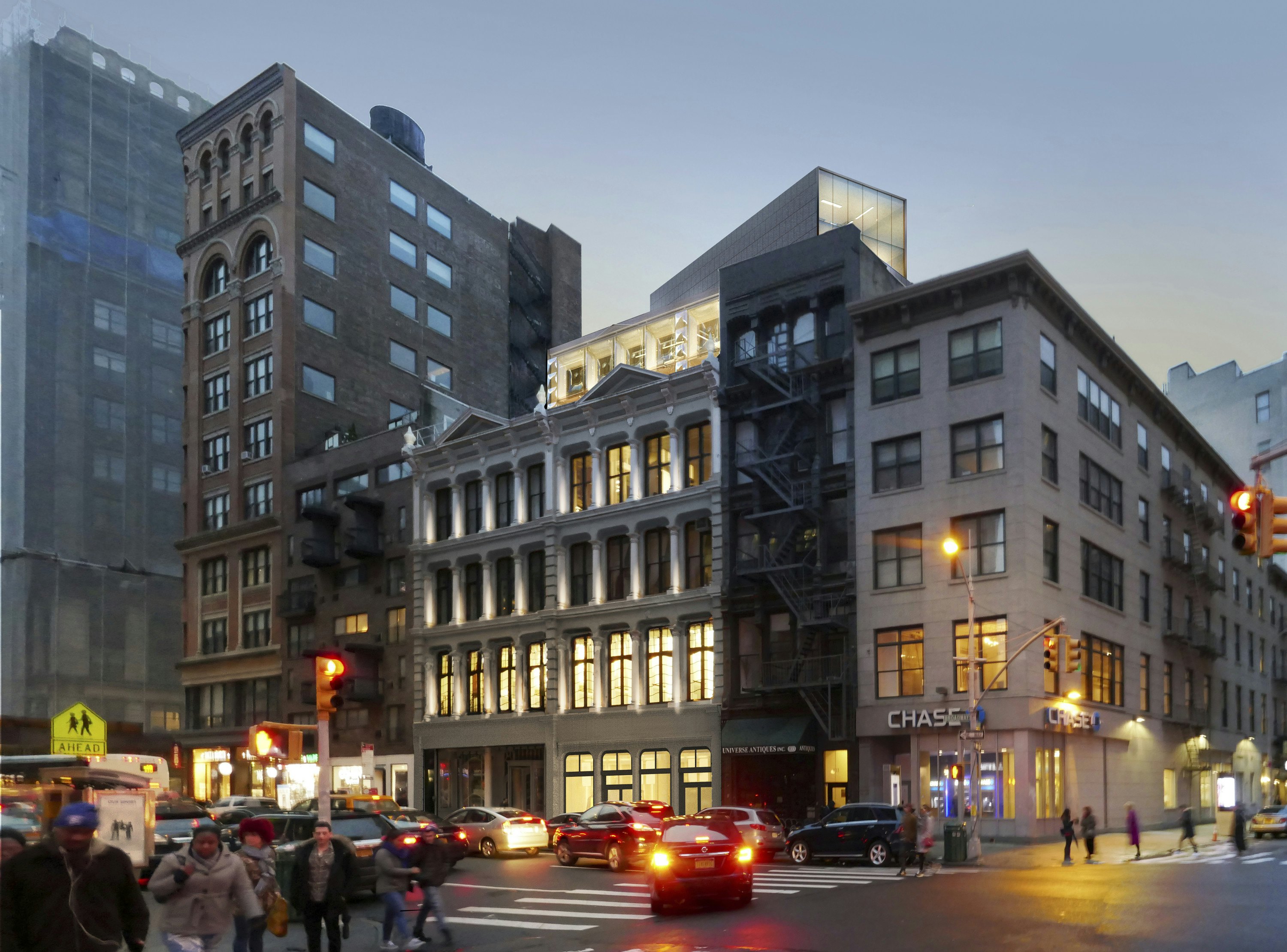At 827-831 Broadway, DXA Studio Designed a Three-Story Addition That Abstracts Light— and Considers a Cultural Landmark's Aesthetic Merit
Architectural Digest
View Article →
In midcentury New York, Greenwich Village was the place to be: Creatives of all disciplines—from poet Allen Ginsberg to dancer Martha Graham—made their lives and work in this downtown neighborhood. Postwar, when the city topped Paris as the global art hub, the painterly group known as the Abstract Expressionists developed their style in the East Village. Finding a home at 827-831 Broadway, the Dutch-American painter Willem de Kooning was one of them. Peers like Larry Poons and Elaine de Kooning later joined him there.
Since then, the city’s Landmarks Preservation Commission (LPC) has designated de Kooning’s former home and studio as a landmark—the cultural significance of the twin cast-iron structures determined their need to be preserved. However, when a recent proposal for a contemporary addition to the building by DXA studio went in front of the LPC, a preservation debate was reignited: When designating a socially important structure, does aesthetic preservation hold as much weight?
For DXA studio, the response from Landmarks was a sound yes. The firm's approved design for 827-831 Broadway is a three-story commercial rooftop addition, with a façade of approximately 9-by-12-foot slumped glass panels. The double skin system reflects light and abstracts images of the streetscape below, an aesthetic effect inspired by the artworks once created inside the structure, said Jordan Rogove, partner at DXA studio. The panels match the size and rhythm of the architectural bays of cast-iron buildings. It’s “a celebration of the artists’ work, through an architectural lens,” he explained. An original proposal by his studio put forth a four-story faceted structure, but the LPC determined that it was not harmonious enough with the base design.
This discussion on aesthetic merit is preceded by a case in 2016, when BKSK proposed an undulating glass roof to top Tammany Hall, a landmark designated for its political history. In the end, the canopy roof design was approved, as was the destruction of the auditorium inside, much to cultural preservationists’ upset. (The winning argument was that a financially viable use could not be found for the original interior space). DXA studio’s addition, in contrast, will not be as predominant. It is set back from the lot line so that it cannot be seen from the street level, when looking up directly from underneath the building. It is visible from an angle, however, as is the addition’s four-story section that the firm sited on top of the building’s undesignated East 12th Street side.
Case by case the debate will continue, for the LPC and the architectural world at large. Summed up Rogove: "As we designate more and more of New York City, you really have to think about the relationship between the building and what was happening inside of it: What are you preserving?"